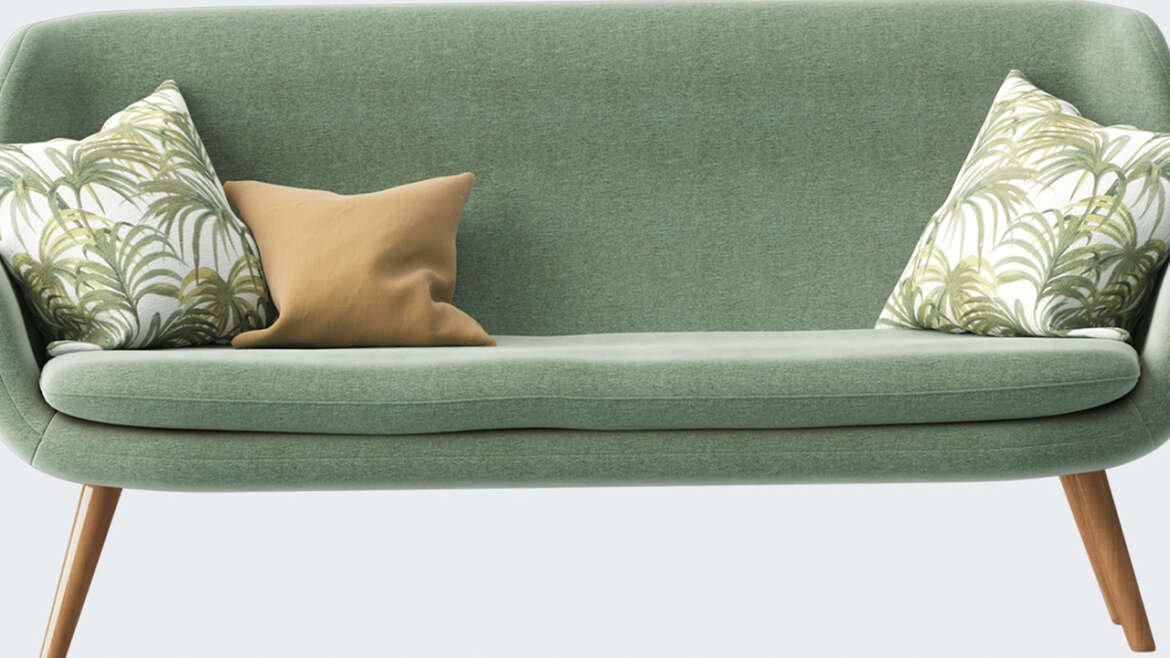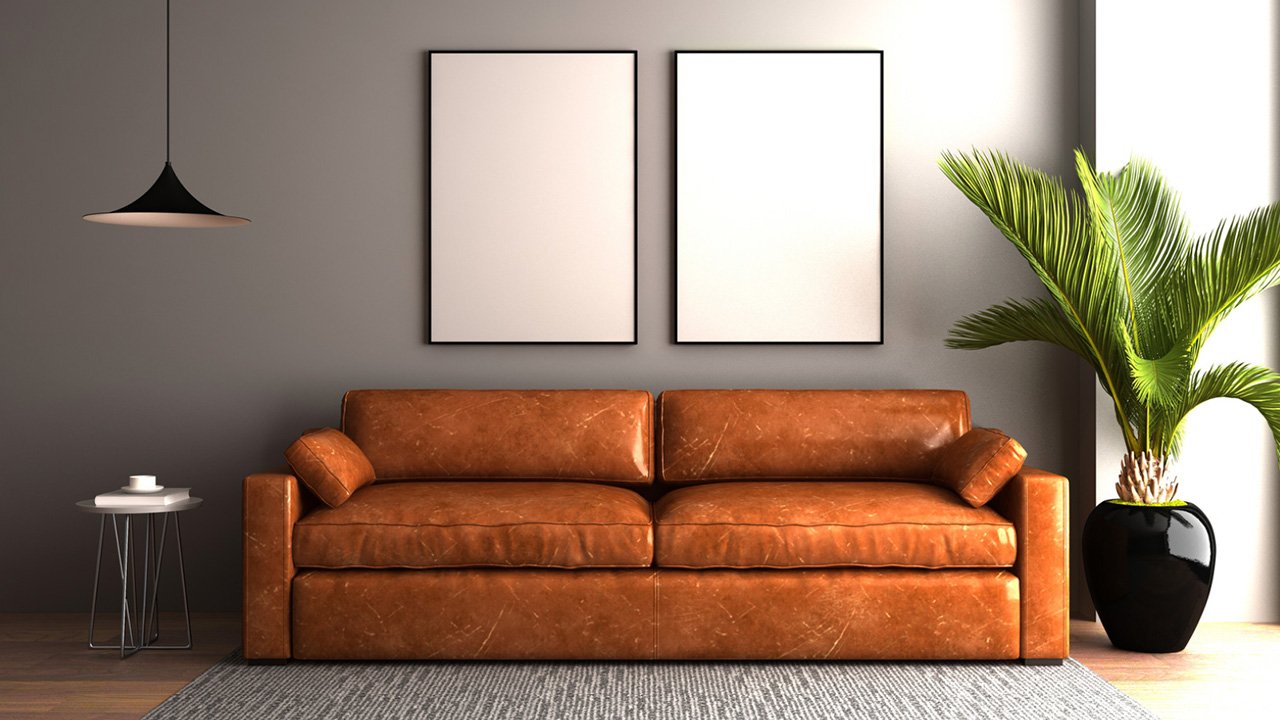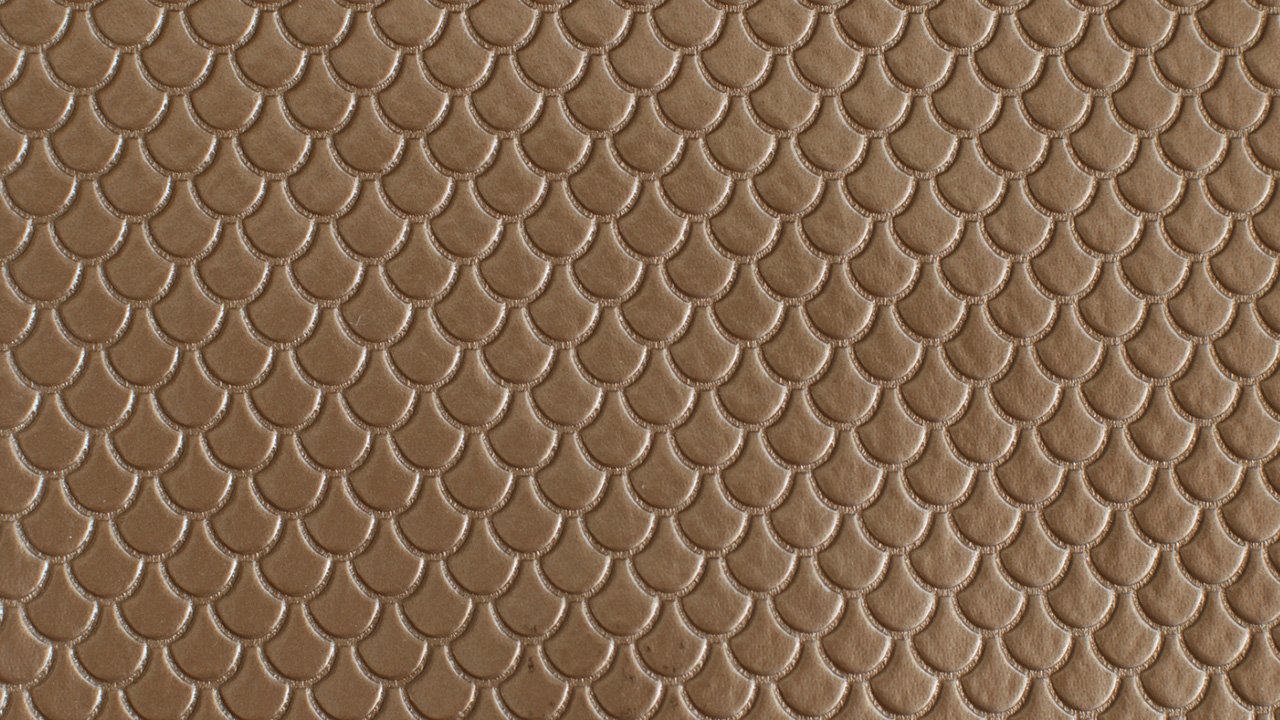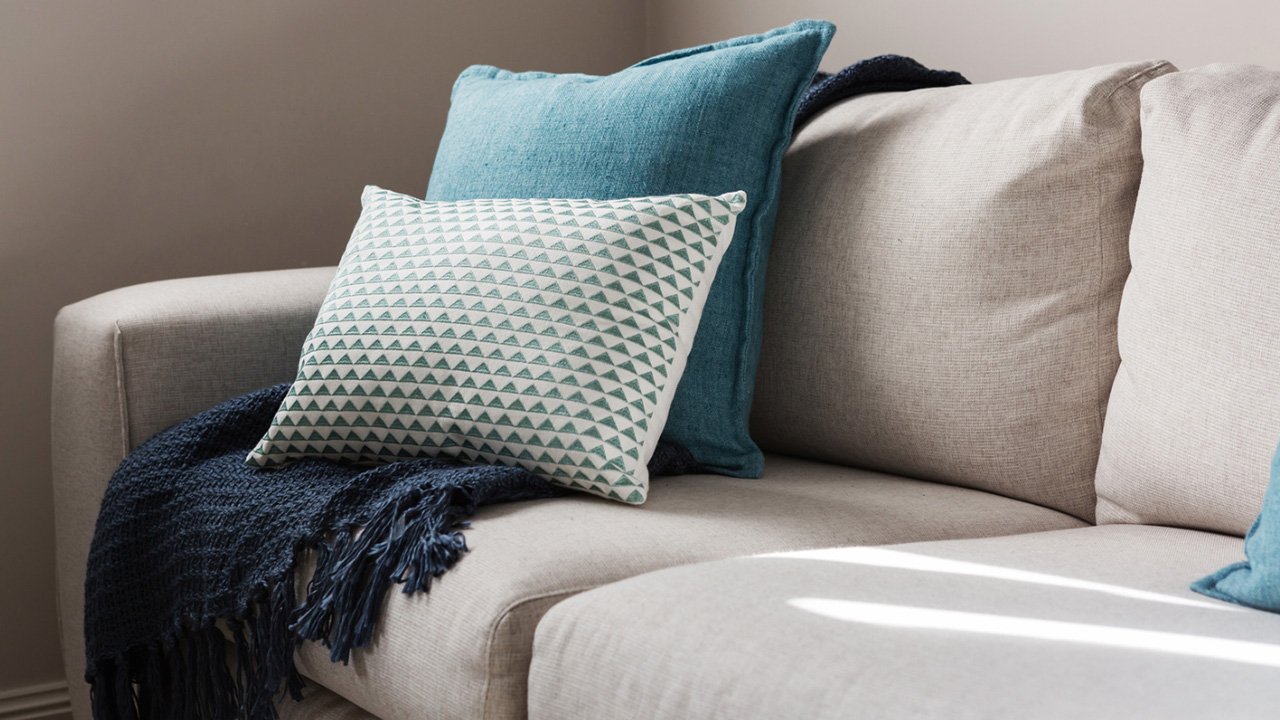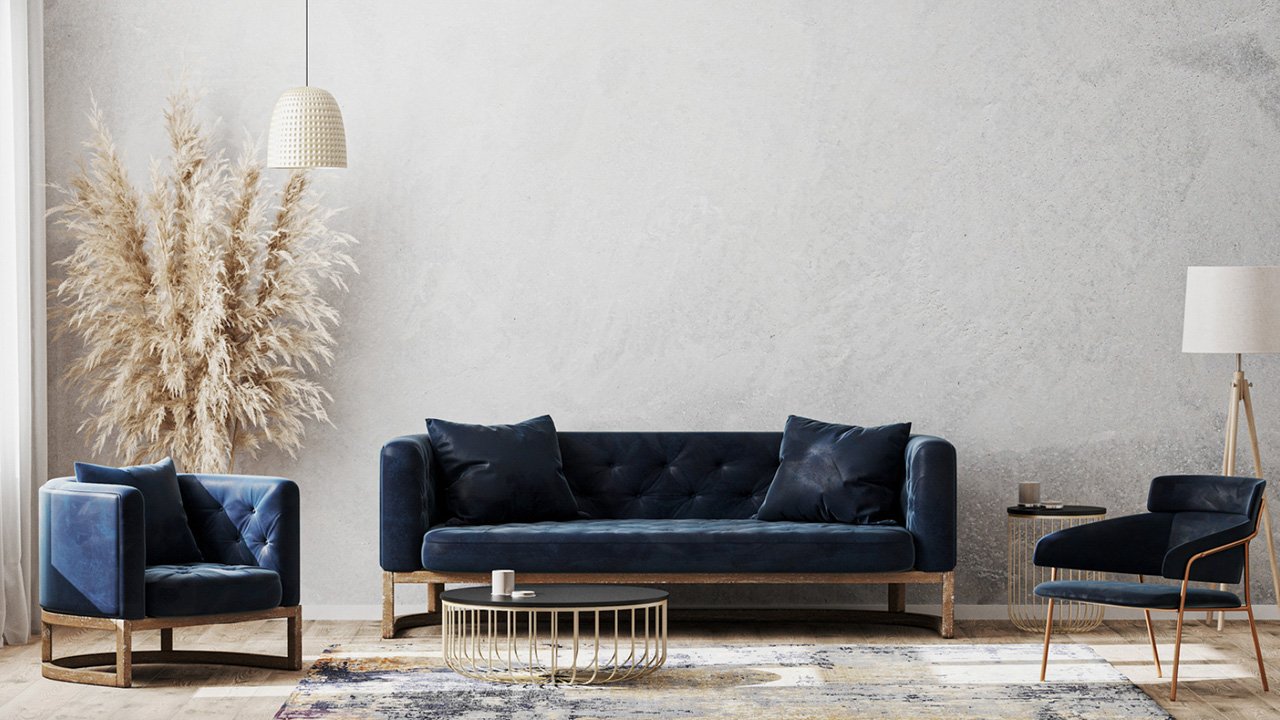Now that you’re finally ready to invest in that dream sofa, one question remains: leather or fabric sofa?
It’s a question many face. Perhaps you’ve got playful pups who are too rambunctious for their own good; maybe you want that chic, minimalist vibe straight out of a magazine; or maybe you’re looking for a cosy corner in your home for family movie nights.
Choosing the right couch for your lifestyle sets the tone in your home. This blog explores the pros and cons of leather couches, fabric sofas, and everything in between. So, if you’re weighing your leather or fabric sofa options, this guide can help you begin your journey towards making the right choice.
Pros of Leather Sofas
When choosing between leather vs fabric sofas, the advantages of leather become clear in singling out leather sofas as an investment in both style and practicality:
High Durability
Leather sofas are popular for their durability, surpassing fabric sofas in their ability to become less susceptible to tears, punctures, and surface damage. This is particularly crucial for pet owners debating between a leather vs fabric sofa, as leather’s robust surface resists scratches and pet hair and simplifies cleaning.
Aesthetic Appearance
Leather sofas effortlessly elevate the aesthetic of any room. Also, when weighing getting a leather vs cloth couch, consider leather’s ability to resist fading and develop a rich patina over time—adding character and depth to your living space.
Easy to Clean
With leather, spills and dirt can be easily wiped away with a damp cloth, thanks to the protective coating that repels liquids and stains. This coating also prevents dirt, dust, and allergens from being absorbed into the material, simplifying upkeep.
Hypoallergenic
When comparing leather vs fabric couches, leather’s hypoallergenic quality is a significant health benefit for allergy and asthma sufferers. Unlike fabric upholstery, leather’s smooth surface prevents the accumulation of dust mites, pet dander, and other allergens.
Year-Round Comfort
Leather adapts to your body temperature, providing warmth in winter and coolness in summer. This natural temperature regulation sets leather apart in the leather vs fabric sofa debate, offering consistent comfort.
Cons of Leather Sofas
While leather sofas offer undeniable advantages, it’s also essential to consider the potential drawbacks:
Cost
One of the primary considerations when looking at the pros and cons of leather couches is the initial investment. Being a premium material, leather typically costs more than fabric alternatives.
Limited Options
When comparing leather vs cloth couches, it’s true that leather has limited styles, colours, and patterns compared to fabric. However, while leather exudes classic elegance, fabric sofas provide greater customisation to match diverse interior design preferences.
Susceptibility to Scratches
Leather’s smooth surface, while easy to clean, is susceptible to small scratches and visible wear without proper maintenance. This can be a concern when deciding between leather vs fabric sofas, especially in households with pets or young children.
Pros of Fabric Sofas
Fabric sofas present a compelling set of advantages, particularly in terms of versatility and comfort:
Affordability
One of the most appealing aspects of fabric sofas is their affordability. Compared to leather, fabric sofas offer a more budget-friendly option, allowing you to achieve both style and comfort without a significant financial outlay.
Wide Variety
Whether you prefer a modern minimalist design or a classic traditional look, fabric sofas make it easier to find the ideal match for your home’s aesthetic. This design flexibility is a key advantage when considering a leather or fabric sofa.
Cosy Feel and Versatility
Fabric sofas are celebrated for their soft, cosy feel, creating an inviting and comfortable atmosphere in your living space—perfect when considering leather vs cloth couches for daily use.
Neutral Temperature
Unlike leather, fabric sofas maintain a more neutral temperature, providing consistent comfort. This temperature neutrality is a significant advantage, particularly when weighing the pros and cons of leather couches for year-round comfort. If you have pets, fabric sofas can be comfortable, but be sure to choose a durable, tight weave fabric.
Cons of Fabric Sofas
When considering getting a fabric sofa over its leather counterpart, it’s important to acknowledge the potential drawbacks:
Requires More Maintenance: Stain Prone
Unlike leather, which can be easily wiped clean, fabric can absorb liquids and dirt, necessitating more thorough and frequent cleaning. While stain-resistant treatments are available, they do not offer the same level of protection as leather’s natural resilience.
Less Durable Than Leather Sofa
Regarding durability, fabric sofas may not withstand wear and tear as effectively as leather sofas. While modern fabric technologies offer increased durability, they are generally more prone to showing signs of wear over time, particularly in high-traffic areas.
Allergen Buildup
Fabric sofas can accumulate allergens such as dust mites, pet dander, and pollen more readily than leather sofas. The textured surface of fabric provides an ideal environment for these allergens to thrive, potentially triggering allergies or respiratory issues.
Budget Considerations: Leather vs. Fabric Sofas
- Initial Outlay: Fabric sofas generally present a more accessible initial cost, which makes them a great option for budget-conscious buyers.
- Long-Term Investment: However, when considering the pros and cons of leather couches and fabric sofas, leather sofas offer exceptional longevity. Their robust nature means they withstand daily wear and tear more effectively than fabric, potentially saving you the cost of frequent replacements.
- Maintenance Costs: Fabric sofas, while initially cheaper, require more frequent cleaning to maintain their appearance and hygiene. Stains can get into their weave and make it more challenging to remove. In this case, professional cleaning may be necessary. Conversely, leather sofas are easier to clean, requiring only occasional wiping with a damp cloth. This ease of use can translate to lower long-term maintenance costs.
- Household Dynamics: For households with pets or young children, leather’s durability and ease of cleaning become even more valuable. Fabric sofas in such environments may require more frequent cleaning or even replacement due to damage or staining.
- Overall Value: While the upfront cost of a leather sofa is higher, its durability, ease of maintenance, and enduring aesthetic appeal can offer better long-term value. Fabric sofas provide immediate affordability and a wide range of styles but may incur higher maintenance or replacement costs over time.
Understanding these factors when comparing leather vs fabric couches will help you align your choice with your budget and lifestyle.
How to Choose the Right Sofa for Your Home: Leather or Fabric
Selecting the perfect sofa affects the comfort and style of your living space. When considering leather vs fabric sofa, you need to align your choice with your personal needs, lifestyle, and budget:
- Assess Your Lifestyle: When thinking about a leather vs fabric sofa, consider your daily activities and household dynamics. If you live with pets and young children, a durable, easy-to-clean option is key.
- Evaluate Your Space: Measure your room and consider the sofa’s size and shape. Ensure it fits comfortably and complements your existing decor.
- Determine Your Budget: Set a realistic budget, considering both the initial cost and long-term maintenance. Remember to factor in potential cleaning or replacement costs.
- Prioritise Comfort: Sit on different sofas to assess their comfort level. Consider the cushion firmness, fabric feel, and overall support.
- Match Your Decor: For a classic, sophisticated look, choose leather. For a broader range of colours and patterns, choose fabric.
| Feature | Leather Sofa | Fabric Sofa |
| Initial Cost | Higher | Lower |
| Durability | High, resistant to scratches and wear | Moderate, prone to wear and tear |
| Maintenance | Easy, wipe-clean surface | Requires regular cleaning, stain-prone |
| Allergens | Low, hypoallergenic | High, accumulates dust mites and pet dander |
| Comfort | Adapts to body temperature, firm feel | Soft, warm, diverse texture options |
| Style Options | Limited, classic elegance | Wide range of styles, patterns, and colours |
| Household with Pets | Excellent choice, easy to clean and durable | Requires durable, tight weave fabrics |
| Long-Term Value | High, develops patina, long lifespan | Moderate, may require more frequent replacement |
Tips on Maintaining Your Leather or Fabric Sofa
Whether you’ve chosen a leather or fabric sofa, preserving its appearance and longevity means doing proper cleaning and maintenance.
How to Properly Clean and Care for Leather Sofas
Leather sofas, while durable, require specific care to prevent damage and maintain their luxurious appearance.
- Weekly: Dust the sofa with a soft, dry cloth to remove surface dirt and debris.
- Monthly: Gently wipe the leather with a damp cloth using distilled water. Avoid soaking the leather.
- Every 3-6 Months: Apply a high-quality conditioner designed for your leather type to prevent drying and cracking.
Consider these cleaning tips too:
- Dust Regularly: Use a microfibre cloth or your vacuum’s soft brush attachment to remove dust and dirt.
- Wipe Spills Immediately: Use a clean, dry cloth to blot spills. Avoid rubbing, which can spread the stain.
- Use Leather-Specific Cleaners: For stubborn stains, use a cleaner designed for leather. Always test in an inconspicuous area first.
- Condition Regularly: Prevent cracking and maintain suppleness by applying a leather conditioner.
- Avoid Harsh Chemicals: Never use abrasive cleaners, harsh chemicals, or solvents, as they can damage the leather.
- Keep Away from Direct Heat and Sunlight: Heat and UV rays can dry out and fade leather.
How to Properly Clean and Care for Fabric Sofas
Fabric sofas, with their diverse textures and patterns, require different care practices to prevent stains and maintain their vibrancy.
- Weekly: Vacuum the sofa thoroughly to remove dust, crumbs, and pet hair.
- Monthly: Spot-clean any stains with a fabric-specific cleaner.
- Every 6-12 Months: Consider professional cleaning for a deep clean.
Consider these cleaning tips too:
- Vacuum Regularly: Use a brush attachment to remove dust and debris from crevices.
- Treat Stains Immediately: Blot spills using a clean, dry cloth. Use a fabric-specific stain remover.
- Use Fabric Protectors: To create a barrier against stains and spills, apply a fabric protector.
- Test Cleaners: Always test fabric cleaners in an inconspicuous area before applying them to the entire sofa.
- Follow Manufacturer’s Instructions: Adhere to the manufacturer’s cleaning guidelines for your specific fabric type.
- Professional Cleaning: Hire professionals to do deep upholstery cleaning to remove embedded dirt and allergens.
Leather or Fabric Sofa: Which is Perfect for You?
When choosing between leather vs fabric couches, remember that the ideal choice aligns with your lifestyle, budget, and aesthetic preferences.
For professional cleaning and maintenance of your leather and fabric sofas, consider Clean and Care’s expert services. We help you keep your furniture looking its best, ensuring a comfortable and stylish home environment. We also provide other solutions such as carpet cleaning services and mattress cleaning services.
So, don’t wait—contact Clean and Care to schedule a professional cleaning today!


